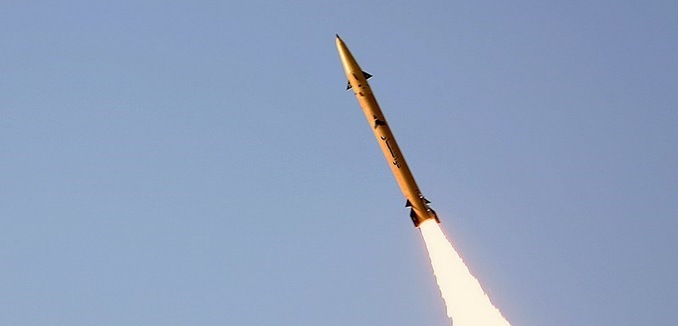Iran released a video on Sunday showing the test-firing of a new ballistic missile that it has started mass producing, Tasnim News Agency reported.
The domestically-designed missile, named Zolfaqar, is seen successfully hitting its intended target in the recording, which was released hours after Iran’s defense minister inaugurated a production line for the weapon.
Zolfaqar is powered by solid fuel and can hit targets up to nearly 470 miles away “with pin-point accuracy,” according to Tasnim, which is affiliated with Iran’s Islamic Revolutionary Guard Corps (IRGC). The agency also claimed that the missile can resist electronic jamming signals.
Iran plans to put the Zolfaqar into service on March 2017, to coincide with the end of the current Iranian year.
The Pentagon charged in a report released last month that Iran had significantly upgraded its ballistic missile capabilities since last year’s nuclear deal. Weeks later, Emanuele Ottolenghi, a senior fellow at the Foundation for Defense of Democracies, wrote that Iranian Foreign Minister Mohammad Javad Zarif’s recent visit to Latin America was partially intended to boost Iran’s ballistic missile program.
Iran fired a ballistic missile in March that had the phrase “Israel must be wiped from the face of the earth” inscribed on it in Hebrew. That missile had a range of 1,400 kilometers (870 miles).
While Iran’s development of ballistic missiles, which are capable of carrying nuclear warheads, is reportedly spearheaded by the IRGC, a Wall Street Journal editorial published after the March test observed that Iranian President Hassan Rouhani, a so-called “moderate” in the regime, had also publicly ordered his defense minister to speed up work on the program.
Iran’s continued ballistic missile tests are being carried out in defiance of United Nations Security Council Resolution 2231, which codified last year’s nuclear deal and calls on Iran “not to undertake any activity related to ballistic missiles designed to be capable of delivering nuclear weapons, including launches using such ballistic missile technology.” The resolution also says that Iran must abide by previous Security Council resolutions, which placed restrictions on ballistic missile work until 2023.
When asked in a Senate Foreign Relations Committee hearing in December whether Iranian missile launches after implementation of the nuclear deal would constitute a violation, Ambassador Stephen Mull, lead coordinator for Iran nuclear implementation, replied that “it would violate that part of the U.N. Security Council resolution.”
An Iranian missile launch in October was officially found by the Security Council to be in violation of the resolution, but the United States and the European Union have stopped short of classifying subsequent launches similarly.
Secretary of State John Kerry said at a press conference in April that the U.S. expects Iran “to make it clear to everybody that they are prepared to cease these kinds of activities that raise questions about credibility and questions about intention.” However, Iranian Foreign Minister Mohammad Javad Zarif rebuffed Kerry a few days later, saying that the Islamic Republic would not negotiate or compromise over its ballistic missile program.
[Photo: Tasnim News ]




